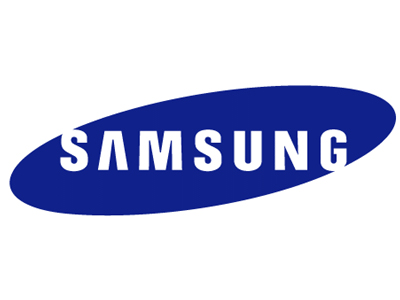
Korean conglomerate Samsung is expected to announce an 85-inch Ultra HD LED TV at CES in January, 2013.
According to Samsung, its latest television will be "the world's largest commercialised UHD LED TV". It'll offer over eight million pixels and "lifelike" picture to viewers.
Samsung joins the likes of Sony and Toshiba in making its foray into the next generation of high-definition viewing. Ultra HD (formerly known as 4K) TVs deliver resolutions of 8MP or 3840 x 2160 pixels, which is four times higher than 1080p televisions that have 1929 x 1080 pixels.
The firm's "world's largest" moniker may be overtaken sooner rather than later, though. LG's 84-inch 4K-supported TV released just two months ago, while there's also 'non-commercialised' screens such as Panasonic's 152-inch Ultra HD plasma.
Either way, 8K television is in the works, with accompanying screens offering 32 megapixels or 7,680 x 4,320 pixels. As for the price of Samsung's 85-inch Ultra HD LED TV, details have yet to be unveiled but expect it to be near LG's $19,000 TV.
Contact Us for News Tips, Corrections and Feedback
Get Tom's Hardware's best news and in-depth reviews, straight to your inbox.

Zak Islam is a freelance writer focusing on security, networking, and general computing. His work also appears at Digital Trends and Tom's Guide.
-
cats_Paw In percentage, it doesent look like like much. IN fact it looks pathertic.Reply
24 inch has full HD, a table has full HD (10 inch), and 85 inches, so times bigger.
So, if we get 1900x8 1080x8 we get 15200x8640. That would be news, and its not even a better image quality considered the size. -
gnesterenko Cats_PawIn percentage, it doesent look like like much. IN fact it looks pathertic.24 inch has full HD, a table has full HD (10 inch), and 85 inches, so times bigger.So, if we get 1900x8 1080x8 we get 15200x8640. That would be news, and its not even a better image quality considered the size.Reply
The issue isn't whether we can cram more pixels into a panel - we sure can (if you are willing to pay for it). THe issue is signal/hardware bandwidth to actually drive that much graphical power without stuttering. The infrastructure doesn't exist - sure some upper end GPU's can probably do it... if you use mutliple display-port connections for a single screen. But consumer level blue-rays, etc? The standard HDMI spec (as it currently is)? No way.Cats_PawIn percentage, it doesent look like like much. IN fact it looks pathertic.24 inch has full HD, a table has full HD (10 inch), and 85 inches, so times bigger.So, if we get 1900x8 1080x8 we get 15200x8640. That would be news, and its not even a better image quality considered the size. -
Botia ReplySo, if we get 1900x8 1080x8 we get 15200x8640. That would be news, and its not even a better image quality considered the size.
It's two dimensional. That means 8x8=64 times as many pixels. That would be news!
And you assumption about 64x not being better image quality, that's assuming you're sitting the same distance from it. I can't imagine having an 85" TV in my lap. I'll stick with my 10" for now. -
universal remonster This is the situation where the whole "4k" display just feels like a marketing ploy. Everyone wants to talk about how many millioins of pixels and super high screen resolutions. When I think of the benefits of 4k, it is on the size of screens we currently use and giving us a 4X increase in pixel density, and not just total pixel count on the screen. Think of the retina display and the increase in pixel count on the same size panel. In an 85" panel, your pixel density is no different than a 1080p 43 inch screen. The only difference in the picture here is that its just bigger, a feature that is going to cost you $19,000.Reply
I suppose it would allow you to do ultra wide angle film shots similar to what an Imax camera does, which is cool, but I really doubt that would ever become the norm just as Imax cameras are only used for very specific scenes. -
TeraMedia @Cats_Paw:Reply
It's not about the pixel density. It's all about the maximum angle measured between adjacent pixels with your retina as the vertex. You are not going to stand 2 feet from an 85" display, because most of it will be well outside of your high-acuity visual field. You can't even see color outside of a certain angle away from the center of your visual field.
With a SDTV, the recommended viewing distance was 3-5x the screen diagonal size. With Full HD, it's 1.5 - 3x. So the minimum viewing distance for Ultra HD should be about half that, which means 0.75x, or roughly 5'. Anything more than 5' all the way up to 20' (3x) should work well, but you won't even be able to see some of the finer detail at the longer distances.
Personally, when I am watching a movie in Full HD on a 100+ inch screen, pixellation is a complete non-issue. What is far more important at that point is PQ (shadows, gray-scales, etc.), color accuracy, frame timing and associated artifacts, and frankly AUDIO quality. If I can't see the bad guy in the shadows, it doesn't matter that he's rendered with a million pixels. If the video is jerky or has artifacts caused by bad drivers, incompatible timings (23/24/59/60 Hz content vs. display issues), poor post-processing hardware or various other causes, it won't matter to me whether it's Ultra HD or Full HD - or even SD for that matter - because the artifacts and jerkiness will distract me from the content. And if the video is good but the audio is lame, distorted, squeaky, weak, or whatever, then the movie will never provide the immersive you can get at the theater.
Just my 2c. 1080P is plenty for most things. -
robochump Love the progress. 1080P should be cheap when 4K is the new standard. Then 4K marked down when 8K comes out. TV brands are very slowly rolling out new res's because how far can u go? After 8K then what? Really need more than 4k? lol TV will become smart with built-in PC, WIFI, etc to keep consumers interested in buying more TVs. This is one reason Apple not too eager to join the TV market.Reply